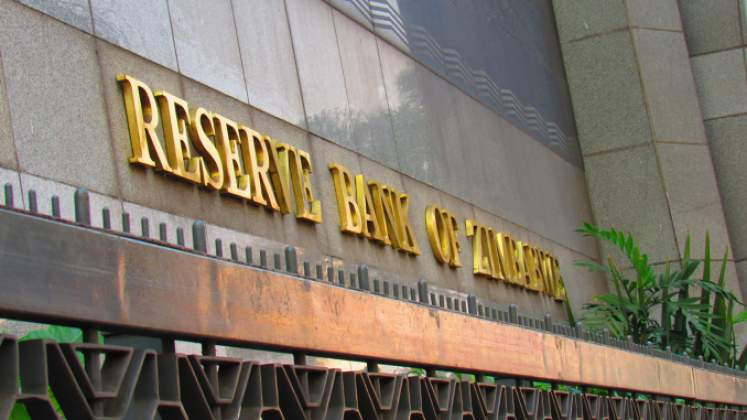
The central bank presented the 2023 monetary policy with one eye focused on appeasing hard-pressed exporters and businesses, while the other was fixed on avoiding economic shocks in the run-up to the general elections to be held within the next six months.
With annual inflation racing from 61% realised in January 2022 to end the year at 244%, the local economy is far from being stable. For the fourth year running, Zimbabwe recorded average annual inflation in triple digits from the 237% of 2019 to the 184% of 2022.
Of concern for citizens’ living standards is the fact that the Consumer Price Index (CPI) continues to increase marginally every month showing that the negative economic fundamentals are not being addressed by the government.
Money supply growth induced by the central bank’s quasi fiscal activities remains the elephant in the room and with it the central bank sees the need to control the foreign exchange prices that obtain in the market. Hence, monetary policy remains key to unlocking sustainable economic growth in the country.
Interest rates review
The central bank had to concede to business demands for a downward review of interest rates in order to induce investment and demand in the economy. This saw the apex bank cutting the bank policy rate from the 200% set in June 2022 to 150%. The review is far from what businesses were clamouring for but it’s a big compromise from the bank which is very much worried about speculative borrowing.
With January inflation at 230%, the more than 80% gap is enough to provide an incentive to borrow in local currency considering the fact that the depreciation of the Zimbabwean Dollar is guaranteed.
Unproductive borrowing to purchase foreign currency or hoard fast moving consumer goods remains big business in Zimbabwe.
- Zanu PF stretching the truth on prices
- Simbisa Brands mulls VFEX listing
- Simbisa Brands listing boost for VFEX
- Simbisa unveils broad VFEX listing roadmap
Keep Reading
However, the bank reduced the lending rate on the Medium-term Bank Accommodation (MBA) facility for the productive sectors (Including individuals and SMEs) from 100% per annum to 75% per annum. This will address the concerns from businesses who intend to borrow for production purposes, even though banks no longer see any incentive to lend in local currency.
The banks’ loan book paints the whole picture in terms of the decline in Zim Dollar loans and the dominance of US Dollar loans. The proportion of US Dollar denominated loans increased from about 37% in December 2021 to 64.2% in December 2022. The adjustment of the minimum deposit rates on savings and time deposits from 30% to 50% per annum will do little to convince market players to hold on to the local currency considering the level of inflation and the hefty bank charges levied on deposits by banks.
Export retention levels
Under pressure from miners who contribute 76% of the country’s export earnings, the central bank reviewed export retentions from 60% to 75% across all sectors, including firms listed on the Victoria Falls Stock Exchange (VFEX). This is slightly below the demands from miners who wanted 80% on the justification that their operations have virtually dollarized and there is greater demand for US Dollar to finance local operations.
However, the abrupt change in policy for stocks listed on VFEX (incentivised by 100% export retention) confirms the fears in the market when it comes to overnight policy shifts and policy misalignment between treasury and the central bank. On local foreign currency deposits, foreign currency retention has been increased from 80% to 85%.
The slight change will only be beneficial if the disparity between the central bank controlled formal exchange rate and market rate is narrowed. The increase in export retention will not have a significant impact on export value. The growth in export value is directly related to the central bank export incentive scheme on incremental exports and the rally in commodity prices on the global market which has benefited the country on exports of Gold, Lithium, Nickel and PGM.
Dollarisation inertia
Despite the efforts of the central bank to de-dollarise the economy, the market has virtually done the opposite. About 70% of domestic expenditure in the formal market is in US Dollars and foreign currency deposits and loans constitute about 65% of total banking sector deposits. If the informal sector trade and private savings are factored in, the percentage increases to over 85%. This means that the inertia to fully dollarise is very high and confidence in the local currency has tanked to the lowest level.
To address this, the priority is not encouraging the use of the local currency as usage is based on perceived value.
The priority for the central bank is to address the causes of the local currency depreciation and key among the obvious reforms is an end to quasi fiscal operations, restricting government borrowing to the constitutionally permitted 20% of the previous year’s revenues and allowing the market to determine the prices of foreign currency.
The usage of the local currency is an indirect benefit of fully addressing currency stability and achieving low levels of inflation over a period of time.
Widening trade deficit
Zimbabwe’s exports continue to grow significantly due to the bullish global commodity prices prevailing.
Exports grew by 16,5% from US$6,371 billion realised in 2021 to US$7,420 billion for 2022.
Exports from the mining sector contribute US$5,628 billion to the total export figure while tobacco exports jumped 68,2% to US$968 million.
However, the country’s imports are also firming due to dollarization with imports growing by 14.8% from the US$7.536 billion paid in 2021 to US$8,563 used in 2022. Thus, the country’s trade deficit widened to at least US$1,143 Billion in 2022.
Once smuggled merchandise is considered, the trade deficit widens significantly. This can only be addressed by increasing production from agriculture and the industry (supply side intervention).
Diaspora remittances oiling consumption.
The country’s total foreign currency earnings keep growing exponentially with US$11,566 billion realised in 2022, up from US$9,863 billion in 2021. The growth largely emanates from the increase in the value of exported mining commodities and remittances, and increased financing of local tobacco. Diaspora remittances picked up from US$1,430 billion to US$1,658 billion with 40% of those remittances coming from Zimbabweans based in South Africa while 25% and 11% came from those in the United Kingdom and United States of America. It is key to point out the fact that these diaspora remittances are cash remittances only and remittances in kind are not included. Similarly, millions more are sent via transport operators or other informal channels. Thus, remittances are playing a key role in oiling demand in the economy as the large portion of the remittances go towards meeting the basic needs of the recipients such as food, school fees, transport fares and other basic household needs. The remittances would have a wider and far-reaching impact to the economy if the foreign exchange market was market determined such that recipients would accept local currency, exchange the foreign currency in formal channels and above all save within the formal financial system.
Inflation outlook
As a strategy to avoid the risk of failing to meet local currency inflation targets as has been the case in the last 5 years, the apex bank forecasted using a blended inflation rate which looks at the combination of Zim Dollar prices and US Dollar prices in the economy. In line with the above, monthly blended inflation is expected to average below 1.5% in 2023 while annual blended inflation is expected to decline progressively to reach 30% by year-end. This will be a decline from the 101.5% realised in January 2023. Once the US Dollar pricing is factored out, the conclusion is that the outlook for Zim Dollar inflation looks very high and the central bank is not that much optimistic on it either.
The monetary policy achieved a balancing act in trying to give in to the demands of the key players in the economy such as miners, tobacco producers and manufacturing businesses. In a way, the central bank can be applauded for that stance.
However, the conclusion is that there is no reform in terms of a complete end to the bank’s quasi fiscal operations and financing of the government projects (deficit financing) via the central bank overdraft facility or other opaque mechanisms. More importantly no reform in winding down the Auction system which has failed to instil foreign exchange allocation efficiency. The central bank remains firmly in control of foreign currency pricing and allocation in the foreseeable future. What may happen is a relaxation of the interbank rate so as to align the controlled formal rate and the market exchange rate. For now, the signal is that what is obtaining is better and preferable to the unknown results of ensuring that the central bank sticks to its core mandate of managing inflation and preserving the value of the local currency.
- Bhoroma is an economic analyst and holds an MBA from the University of Zimbabwe. — vbhoroma@gmail.com or Twitter: @VictorBhoroma1.







